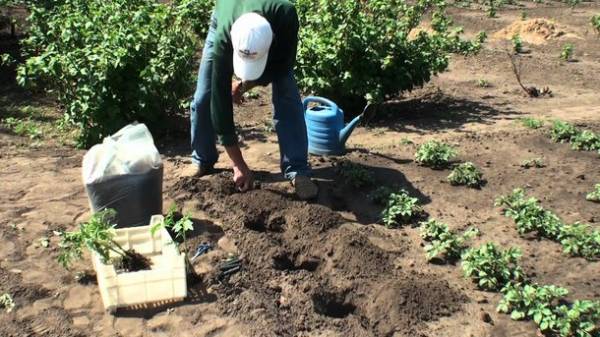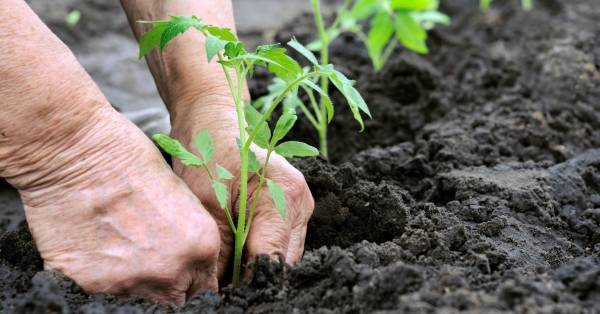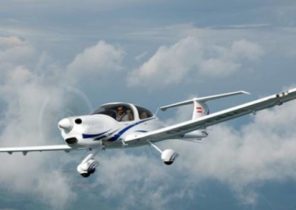
The basics of successful planting in the ground laid before when choosing containers for seedlings. Seedlings planted from a pot, cassette or drawer (lump of earth), would fit in better than with bare roots, and much earlier will go to growth. Also when landing you need as little as possible to damage the plant roots when removing seedlings from the containers.
About how to make change successful, “Today,” said the owner of the greenhouses for growing seedlings “Miller’s Garden” Alexander Melnik, the Director of the Trading house “Summer” Victor Nikitan.
PREPARATION OF PITS: FERTILIZER AND IRRIGATION
One of the most important conditions for successful transplantation — quality preparation of the pit. It makes substantially more than the volume of the root system of the seedling, and then fill with compost or humus. Be superfluous and 3-5 g ammoniated superphosphate or NPK-enriched soil around the roots will significantly increase future harvest. However, it is not necessary to plant the plants in pure compost — contact with it can burn tender roots and impair the establishment. Therefore, the compost mixed with fertilizer, covered with a thin layer of soil excavated from the pit, or mixed with local soil.
It is important to thoroughly soak the hole with water and the seedling planted not just in moist soil, and in the mud, survives much better. For plants that are planted with comas, is formed in the hole hole, matching the size of the lump, and for plants with open root system — the cone, which carefully straighten the roots of the sapling, following the planting depth.
THE INTRICACIES OF PLANTING: THE ROOTS
Peat pots before planting it is advisable to chop or soak — in the solution of potassium HUMATE or microbiological products, accelerating the decomposition of the pot. In this case, the seedlings placed in the hole along with the pot. Seedlings with exposed roots need to pay special attention, as it lost almost half of the roots. This leads to physiological drought, from which the plants suffer in wet soil. It is best to plant seedlings in the evening or early in the morning on a cloudy cool day.
No harm will use rooting stimulants, especially during the landing of questionable seedlings, plants with open root system, plants, some time lying in the sun and lost turgor. Today in the market there is a huge range of corticella. This is a traditional and kornevin, IAA, humates of potassium and sodium. A more modern complex products — fulvate, rediform, Viva, Charkor.

FEATURES THE LANDING OF VARIOUS PLANTS
Seedlings of peppers and eggplant are planted only with a root ball: the delicate root system of these plants is very poorly regenerates damage. They should not be planted deeper than they were in the pot — these plants are extremely reluctant to form adventitious roots on cotyledonous knee, and the risk of root collar rot be recessed landing increases significantly.
Tomato seedlings, on the contrary, easily forms on the stem adventitious roots, greatly increasing the volume of the root system. Therefore, it is possible to correct the overgrown seedlings and put her in a elongated hole and placing in it the stem. The “extra” sheets for a few hours before the landing of the peck to the wound has had time to dry.
Seedling pumpkin crops — cucumbers, zucchini, melons and watermelons (sometimes so grown seedlings of pumpkin) — has a more sensitive root system than peppers and eggplant, and the slightest damage to the roots leads to her death. Seedlings with exposed roots does not take root at all, so drop it only from the pots very carefully. You can, if necessary, to plant such seedlings a little deeper: pumpkin well form additional roots on cotyledonous knee. “Exotic” for us, the seedlings of beet, corn and beans usually transplant fairly easily. This method allows you to obtain additional, more early harvest to avoid the thinning and painful weeding the beds with small seedlings.
THE LANDING OF THE BOXES. Growing seedlings in pots it is not always convenient for farmers. They take up much more space and require more frequent watering. Their big advantage — painless transplant and the complete preservation of the root system of plants, part of which is lost even with the most careful transplanting with a root ball.
So it makes sense in advance, for 5-7 days before planting, shovel “slice” of the coma, having a furrow to the depth of the box between the plants. Later, when landing, a cube of soil gently scoop shovel from the bottom. In addition to reducing the pain of a transplant, such borsdane allows for enhanced branching of the root system.
CARE AFTER TRANSPLANT
It is highly desirable immediately after planting to cover and make a shade for the seedlings: transplant seedlings when the roots suffer, and the scorching sun can dry and burn the leaves. Even better is to increase the humidity around them. To do this, you can temporarily cover the seedlings with light agricultural fiber, or plastic wrap several times to spray the vegetables after planting. It is also desirable to use anti-stress drugs “Megapol”, “Alga”, solutions of humates and plant hormones, such as “Appin”, “Zircon”, “Maxicrop-cream”.
As for fertilizing with nitrogen fertilizers, they are carried out only after the plants take root and begin active growth. Perfect at this time will be fertilizing with liquid organic fertilizer. Fertilizer you can use a solution of urea or ammonium nitrate (15-20 g per 10 liters of water).






